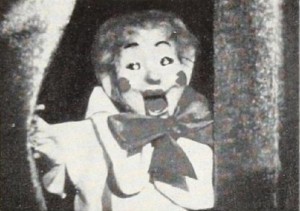
"The construction and performance of marionettes are skillfully pictured in Life Hangs By A Thread, by Paul R. Elliott and Joseph Dephoure. Aided by skillful lighting, a fine sound track perfectly harmonized with the action and an intelligent script, interest is closely held from the time a marionette is a lump of putty to its moments of glory when, in the hands of an experienced operator, it seems to take on a life of its own. Perhaps the most impressive thing about Life Hangs By A Thread is its careful step by step planning, indicating the sound belief by its producers that a movie should tell as much as possible pictorially, with the commentary used only to enhance the visual appeal." Movie Makers, Dec. 1948, 475-476.
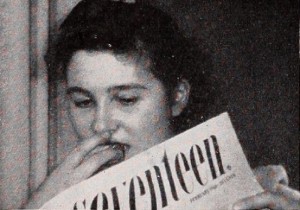
"In Maxine's Big Moment, William Messner proves that he knows the language of the motion picture, for he tells his tale in true visual terms. No subtitles are used, nor are they needed. This is a small film but a suave one, scarcely more than a vignette, as it recounts the excitement of a teen age girl's first formal dance. In it, the producer has used high key lighting that is eminently suitable in portraying a lovely young girl anticipating and preparing for a party. The choice of softcolor backgrounds adds immensely to the mood of the film, and the imaginative mirror shots in which the young lady pins a corsage to her gown are noteworthy. Fine editing and smooth transitions, in addition to good acting, combine to make a delightful and entertaining home movie." Movie Makers, Dec. 1948, 476.
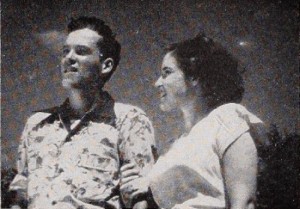
"What would have been an excellent film under any circumstances becomes outstanding as a group production. Produced by the Minneapolis Cine Club, it was originally conceived by William S. Block, carried out under the supervision of G. L. Larson, with Earle E. Ibberson in charge of production, while club president Elmer W. Albinson did the final cutting and editing. All members contributed directly to the project, either in filming or by helping to complete the picture. In the film we accompany two teen-agers, a 4-H boy and girl, on a grand tour of the fair, visiting exhibits, marvelling at the livestock show,standing pop-eyed before the midway spectacles, puzzling over the complexities of modern art, gasping at the fireworks display against the night sky. A running gag furnishes comedy relief, while the wholesome charm of our young guides is revealed in a sympathetic and appealing fashion. The members' filming is consistently competent, and deft editing has made Minnesota State Fair a well integrated and thoroughly enjoyable entertainment." Movie Makers, Dec. 1948, 476, 491.
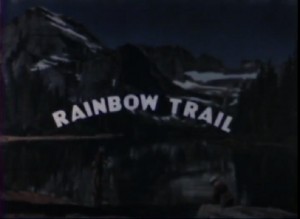
"It takes a good deal of ability to treat fishing cinematically. It takes still more ability to approach the subject with humor and yet avoid the ludicrous. O. L. Tapp has bypassed both pitfalls in his Rainbow Trail, a beautifully paced, short film that catches the fun of all fishing trips but still makes its point that the angler's life is not all sweetness and light. Mr. Tapp precedes the body of his film with several short shots and titles, all of which indicate a candid view of a fisherman's veracity. The succeeding footage illustrates his thesis, as he (thin, awkward) and a companion (stout, capable) undergo the rigors of stream fishing. That a reviewer can sum up the characteristics of the two men in two adjectives is an indication of the excellent casting and direction which distinguish Rainbow Trail." Movie Makers, Dec. 1948, 491.

"The Blue refers to a glacier of majestic proportions high in the Olympic Mountains of northern Washington. Solduc, a small station in the Hoh Valley, is the point from which Theodore H. Sarchin and his two companions set out with high hopes to conquer the formidable ascent to the famous ice fields. Although they reach the Blue, the sun has been there first, softening the ice, and they must turn back without having attained the summit. Inherent in the film is a deep reverence for the wild, inspiring beauty of the scene, which clearly communicates itself to the audience — no small achievement in an amateur travel study. This reverence never becomes mawkish, the pedestrian titles and homely incidents en route nicely counterbalancing it. Superior camera work makes the most of the setting, while skillful editing combined the best elements of story and scene to make a dramatic presentation. An expertly scored musical accompaniment adds impressively to enjoyment of Solduc To The Blue." Movie Makers, Dec. 1948, 492.
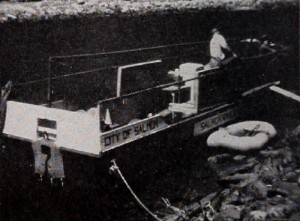
"Spanning the upper and narrower part of the State of Idaho from east to west, the Salmon River provides the original blueprint for one-way traffic. You either end up in western Idaho — or at the bottom of the river. Frank E. Gunnell ended up in Idaho. His coverage of this adventurous journey in The Salmon — River Of No Return is complete, carefully planned and splendidly competent. One becomes thoroughly familiar with the great, flat-bottomed barge, guided by giant sweeps fore and aft, in which the hazardous rapids of the Salmon are surmounted. One is charmed, even fascinated, by the deserted mining huts along the river and the few forlorn characters who still live amid this rocky wilderness. The Salmon — River Of No Return is a leisurely and well made record of a unique vacation adventure." Movie Makers, Dec. 1948, 492.
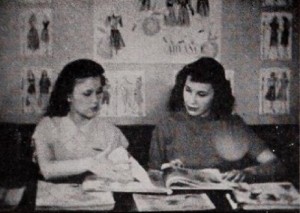
"One of the most unusual educational institutions in America, the John Hay High School, of Cleveland, Ohio, is devoted exclusively to courses that adapt the student to life in a business civilization. Business Champions, produced for the school by Anthony L. Cope, a John Hay instructor, provides fine coverage of all the school's activities. With the end product — a well adjusted citizen with a job — constantly in mind, Mr. Cope shows fully and intelligently how John Hay determines and develops the aptitudes of its students." Movie Makers, Dec. 1948, 492.
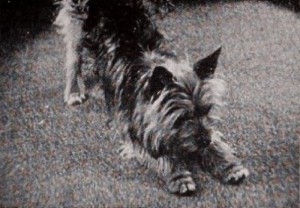
"A young girl and an Australian terrier named Frisco are the ingredients of Calling Frisco, a sound on film story in which the speech is mostly from the dog's point of view. The film flows smoothly through typical scenes of a day's activities of eating and going to market and playing, ending in a dramatic climax in which Frisco protects his young mistress by warning off an intruder. Imaginative viewpoints and pleasant interior lighting are employed throughout. The dog's simple tricks are well pictured without being obtrusive, while the scene in which a bouncing ball lands in a goldfish tank, with its accompanying sound track, has the creative fantasy of Disney. Cyril Stevens has made a jolly film. " Movie Makers, Dec. 1948, 493.
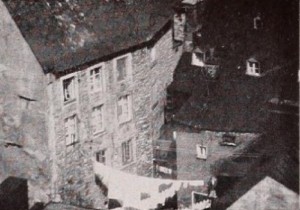
"A schoolboy in need of material for a geography theme launches Five Days From Home, as Dad gets out the movie projector and shows Son the cine harvest of his summer holiday. Among the points covered in a whirlwind auto trip from New York to Canada are Quebec City, Montmorency Falls, a Canadian pulpwood mill and Ausable Chasm, in New York State. Mannie Lovitch's handling of these subjects is always competent, occasionally excellent. His inquiring camera found many scenes of quaint charm in the old St. Lawrence city, and his full scale visual treatment of the pulp mill is sustained in interest by a superb bit of scoring with modern music by Virgil Thompson. Of especial note is Mr. Lovitch's mobile cross-cutting of the three to four themes which make up his coverage of the usually difficult Ausable Chasm." Movie Makers, Dec. 1948, 493.
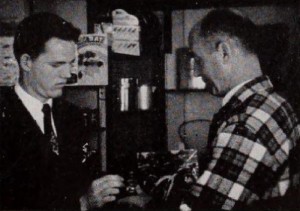
"May Day Conflict is a well executed and skillfully edited family story film of the conflict created by the opening of the trout season and a flower festival both falling on May first. The central character is a good loser (the husband, of course!), as he accompanies his wife to the flower show after elaborate preparations for his fishing trip. Herbert F. Sturdy has deftly woven into the story pattern light, humorous incidents to provide amusing comedy relief from his fine floral closeup studies. Expert camera handling and smooth transitions lend a semi-professional finish to the picture." Movie Makers, Dec. 1948, 493-494.
Total Pages: 299